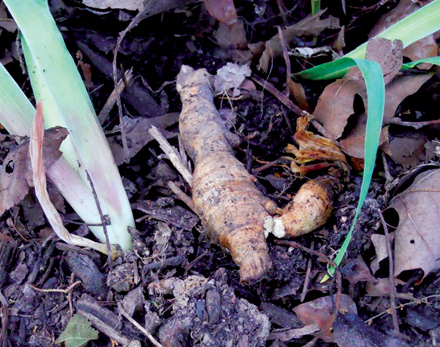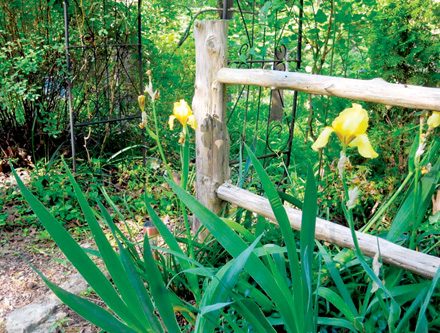Moving Iris

“My iris are blooming and they need to be divided. Can I divide them after they are finished now or do I have to wait until fall? They are so thick and crowded that not all of them bloom. Can I dig them up and store them until fall and replant them somewhere?” – Vicki
The best time to divide iris is immediately after they bloom through fall. No need to dig them up now and store unless you are moving, best TO keep them in the ground growing until you are ready to divide and replant. Decreased blooming is a definite sign your iris are ready to be divided.
The next sign that you should consider transplanting your iris is if the roots, or rhizomes start heaving out of the ground. Overcrowded iris rhizomes will start to push on each other, which results in the entire root system of your iris plants literally pushing themselves out of the ground. They may even stop putting up foliage and the plants may only grow foliage on the outside edges of the clump.
The best time to transplant iris is in the summer, after the iris have finished blooming, up until fall. To divide your iris, start by lifting the clump of iris plants out of the ground with a spade or fork. If possible, lift the whole mass out whole, but if you are unable to do this, carefully break the clump into smaller parts and lift these out. Next, brush of as much dirt as possible from the iris rhizomes. This will make it easier to see when you are breaking the clumps apart. The next step in dividing iris plants is to divide the iris rhizomes.
Each iris rhizome should be divided into pieces that are three to four inches long and have at least one fan of leaves on the rhizome. Do not remove the roots from the rhizomes. As you get closer to the center of the clump, you may find large sections of rhizomes that have no leaf fans. These can be discarded.
Check all of the divided iris rhizomes for iris borers and disease. The iris rhizomes should be firm and not soft. If the rhizome feels soft, throw it away.
Once the iris rhizomes have been divided, you can replant them. First, trim all of the iris leaf fans back to about six to nine inches tall. This will allow the plant to re-establish its roots without having to support a large amount of foliage at the same time. Next, plant the iris rhizomes in the selected location. This location should receive a good deal of sunlight and should be well draining.
Dig a hole where the rhizome will settle into the ground just below the ground level. If planting several irises near each other, point the rhizomes away from each other and space them 18 inches apart. Spread the roots out around the rhizome and then cover the roots and the rhizome with dirt. Water the newly transplanted iris plants well.
Charlotte Ekker Wiggins is a beekeeper, gardener and sometimes cook. Published by El Dorado Springs Sun once in print and online with author’s permission. Copyright 2017, all rights reserved. This column may not be reprinted, republished or otherwise distributed without author’s permission. Contact Charlotte at gardeningcharlotte at gmail dot com.

IRIS EASY TO TRANSPLANT – Irises store energy in their rhizome, or root. To divide these roots, make sure a piece of green foliage is attached. Cut the foliage back 4-6 inches after blooming and move to their new location. Also plant the root very shallow in the ground, barely covering the tiny roots on the side of the rhizomes, and then water. (Photos by Charlotte Ekker Wiggins).

BLOOMED THE FIRST YEAR – These yellow irises were a gift from a friend’s garden. She dug them up after they had bloomed so once in my garden, they bloomed the following year. When dug up while blooming, it can take iris two years to bloom again.



Facebook Comments